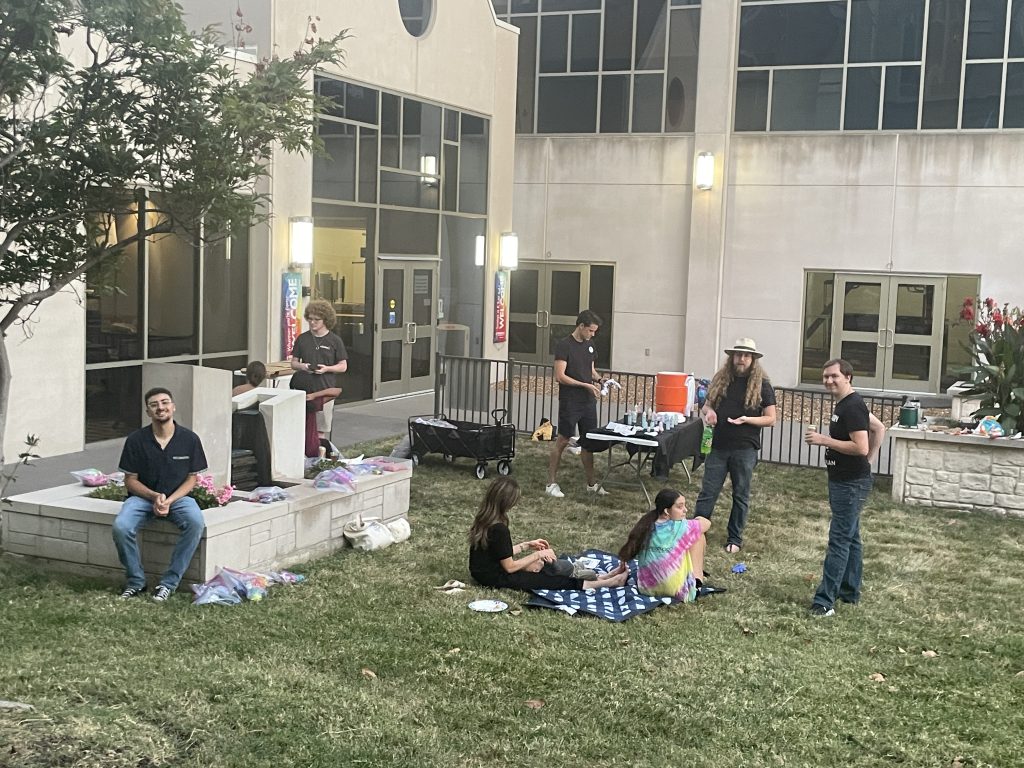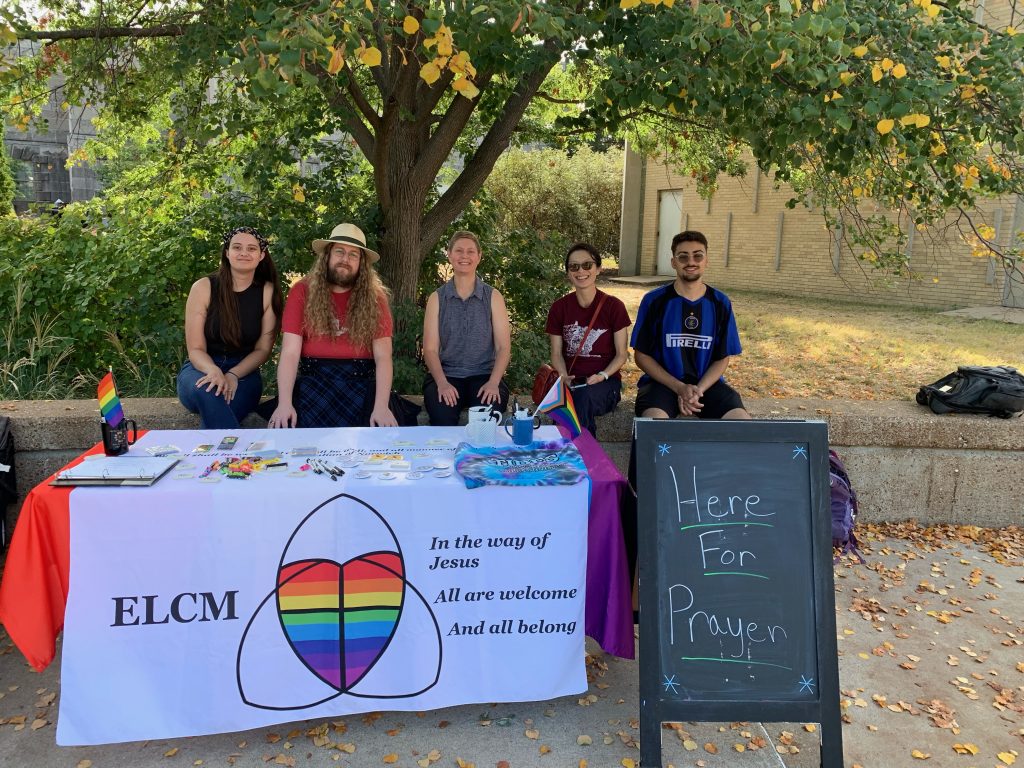
The Vinery (link to https://www.thevinery.org/) is a two-year program that brings together congregations to discern how we can be better neighbors to the university campuses that are near us.
Earlier this fall, members of our Vinery Team—Gabe, Hikaru, and Jane—visited our Vinery partner congregations, Calvary Episcopal and St. Andrew’s Lutheran in Columbia, Missouri. (Maggie is also on the Vinery team but did not go along on the visit.) Calvary is located on the campus of the University of Missouri, whereas the Lutheran congregation is a couple of miles away. These two congregations host a campus ministry in partnership with each other, though Calvary is the site of the gatherings. Together, they are seeking to discern ways to structure their campus ministry, organizationally and financially, that can be sustainable going forward.
On Saturday evening, we attended a social gathering (pizza, smores, and tie dying) that included students and staff from 5 or 6 different campus ministries, all of which identify themselves as affirming of the queer community. Since many Christian organizations on the Mizzou campus are quite conservative, this “open and affirming” position is an important defining characteristic they all share. This group meets a few times a year for joint activities or worship.
On Sunday, we attended worship at both congregations and had the chance to talk with parishioners about their perspectives on campus ministry. In addition to noticing and reflecting on the differences in worship services and theology (Episcopal vs. Lutheran vs. UCC), we also noted the distinctive cultures of the congregations, such s urban versus suburban feel and how they engaged with guests. On Sunday afternoon, we walked in the CROP hunger walk, an activity that involved members of both congregations.
On Monday, we took part in the “tabling” that the ministry does on campus once a week. There is a location called “Speaker’s Circle” which is a “free speech zone”—anyone can set up a table and attempt to engage passersby. They had a table that clearly identified them as Lutheran and Episcopal, and also queer-affirming (lots of rainbows), with a variety of free things to share. A handful of students came up for conversation, including one young person who later attended the Monday evening Bible study. On Monday evening, we joined the campus ministry group of around a dozen students (a mixture of graduate and undergraduate) for Bible study, evening prayer and dinner. The Bible study focused on the book of Tobit, a book from the apocrypha (books that some denominations consider scripture while others don’t). The dinner was a home-cooked meal provided by members of St. Andrew’s.
As we have reflected on our partner church visit, we’ve come away with a few different thoughts. Given the size of our congregation, we were not necessarily thinking going into the Vinery program that we would be rebuilding a campus ministry. Rather, we assumed we might be identifying a neighborhood ministry that would allow us to collaborate with students or young adults.
Seeing how Calvary and St. Andrew congregations were offering their campus ministry together, however, inspired us to imagine collaborating with our neighboring congregations to offer something more specifically oriented towards people involved in the university. We remain purposefully open to defining our target audience broadly to include students, staff, or faculty, and not segregating by age. At the same time, our visit reminded us of the significance of a campus ministry that would specifically address students in that stage of their life. Seeing older members contributing meals to your Monday campus ministry event, we can imagine older members being part of a ministry even if it is geared toward students. We have also learned recently about a new group in the Minnesota UCC Conference calling themselves the Young Adult Cohort, including members from both within the Twin Cities and in greater MN. We could imagine collaborating with such a group too.
We also took away some practical aspects of offering campus ministry. The efforts of our partners to reach out to students at Speakers Circle expanded our capacity to imagine how to relate to students on a large complicated campus. We are not sure if there is something comparable at the University of Minnesota, but it is worth exploring. We also noticed the greater role churches play in Columbia compared to the Twin Cities. Despite this fact and the presence of Speakers Circle, we also noted how much effort it took to build and maintain a vibrant campus ministry. We have noted how the campus minister is trying to meet the students where they are on TikTok and Instagram. The Gen Z-ers in our church have shared how they aren’t aware of church happenings. Clearly, we would need to expand our communication efforts beyond e-newsletters and Sunday bulletins.
We identified some lingering questions for our partners. In particular, we wondered how they are figuring out what programming they want to offer and how they are measuring success for the different components of their campus ministry. Our team will continue to process what we are taking away from this visit. Our next steps have included work on our congregational story of self, which is rooted in our listening sessions with the congregation over the summer. We have also been setting up meetings to do deep listening with a variety of folks beyond our congregation, including students currently attending our services, young neighbors whose contact information we collected at the Community Night, folks from other campus ministries at the U, and students or departments at the U.

